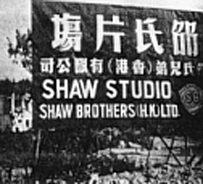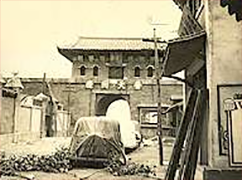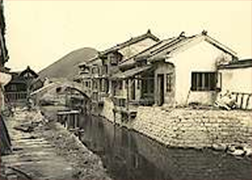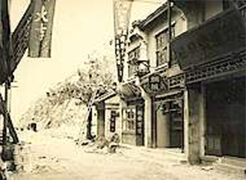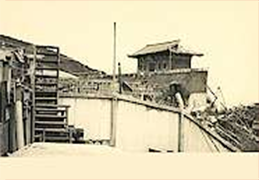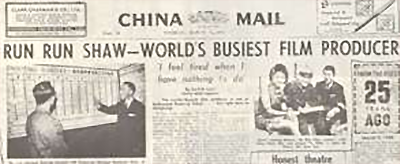"In the film industry, one walks a tightrope, with all it's thrills, satisfactions and dangers. That is perhaps why the business of making movies has given me the pleasure, the excitement and the fulfillment which I have always craved"
- Sir Run Run Shaw, Movie/TV Marketing, Eighth issue, 1977
In 1957, Sir Run Run Shaw made the decision to move to Hongkong to produce quality Chinese movies on his own terms, at his own studio.
There, in a quiet spot in Northern Kowloon called Clearwater Bay, he bought 46 acres of land from the Crown Government to build a studio. The land cost only 45 cents a square foot partly because of its proximity to the Chinese border and the communist threat that was looming at the time. Much of the land was dominated by a hill and Run Run had to cut off 60 feet from the top of the hill and level it in order to build the studio. Upon completion, Shaw Studios in Hong Kong became the largest privately owned studio in the world.
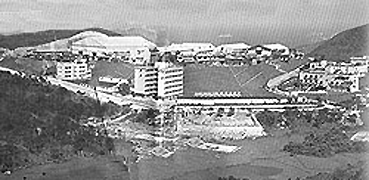
Shaw Studio, Clearwater bay, Hong Kong
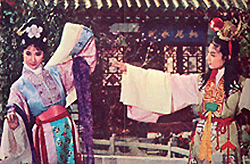
Dream of the Red Chamber, 1962
Work on 6 sound stages commenced immediately on 650,000 sq ft of land that was cleared for that purpose. By 1958, with construction still going on, the make-shift studios managed to produced its first movie.
When the first two sound stages were completed on November 1960, the light comedy 'All the Best' starring Peter Chen Ho opposite a bevy of starlets was shot. By the fall of 1961, two more sound stages were operational, including the multi-storey administrative building (which eventually spread over five blocks), staff dormitory, film editing, film processing, sound recording and dubbing rooms.
All Shaw films could now be shot in colour (Eastmancolor) as well as widescreen projection (Shaw Scope - Shaw's version of Cinemascope using an anamorphic lens). The success of 4 Shaw colour films released in 1962 - 'Bride Napping', 'The Magnificent Concubine', 'Dream of the Red Chamber' and 'Madam Normal Snake' clearly signalled that the 'era of colour' had arrived in Hong Kong. It was pioneered by Shaw Studio.
On December 6, 1961. Shaw Studios in Hong Kong was officially opened. The Shaw studio staff, numbering 1,200 took up residence and work in all 25 departments. They were united in one effort - the production of Hong Kong films that could hold their own in the world market.
Construction work on 6 more sound stages on an additional 200,000 sq ft of land began in 1964. These were completed on December, 1965. Then by the end of the decade, Shaw studios occupied 850,000 sq ft of ground.
It had 5 blocks of adminstrative buildings; an editing and sound recording studio; 4 staff
dormitories for its 1,500 workers; 12 sound stages which could be used to shoot 12 different indoor sequences simultaneously and 16 permanent outdoor sets with palaces, gardens and complete streets. It even had a plaster reproduction of China's Great Wall.
To ensure consistent quality control at the post production level, extensive facilities were built by the studio including a state of the art colour film processing laboratory. Completed in 1967, the HK$3 mil facility allowed films to be developed in house at a rate of 1000 ft per hour and printing at 5000 ft per hour. The studio also had a music scoring building with composers and musicians in residence; prop and carpentry shops; a stable for the horses; a warehousing and shipping center for the finished films; and air-conditioned costume warehouses with some 80,000 Chinese costumes.
In its heyday, especially after the listing of Shaw Brothers (HK) in 1971, Shaw Studios established itself as the best known and most successful movie producer in Hong Kong. As in Hollywood, the Shaw Brothers ran the studio on the star system and mass production.
Permanent movie sets, Shaw Studios Hong Kong
In output terms, it rivalled the Hollywood studios. Between 1961 to 1964, Shaw studio made 13-18 films per year. In 1965, Shaw Studios set a new record of 26 films in that year alone. As a result, Hong Kong's English language daily - The China Mail - described Mr Run Run Shaw as 'The World's busiest film producer' (March 9, 1965). Beginning in 1966, Shaw Studios reached its peak output of 40 or more Shaw Scope movies a year.
These Eastmancolour mandarin films were distributed throughout the world.
Prior to Shaw Studios, the Hong Kong film industry was producing low budget films that cost an average of HK$200,000. Very little emphasis was paid on quality and Chinese films were seldom shown in large first run cinemas.
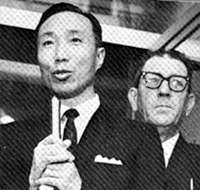
Run Run at World's Fair, Seattle, Washington, 1962
Shaw movies however, were radical in that they had budgets up to five times the average with close attention on quality control from the concept stage.
At the peak of Shaw Studio's output, production on a new film would start every 9 days, with as many as 12 films in production at any one time.
Shooting would take an average of 40 days and were always done 'wild', that is, without a soundtrack.
Later, they were dubbed in all the necessary Chinese dialects as well as European languages for the handful that were considered good enough to be exported to Western markets.
To avoid territorial censorship issues, 3 versions of films were made, a 'hot' version for the US, Japan and Europe; a 'cold' version for Singapore, Malaysia and Taiwan; and a 'medium' version for Hong Kong.
In order to pave the way for the Shaw films to travel, both Run Run and Runme visited the United States, South America and Europe.


